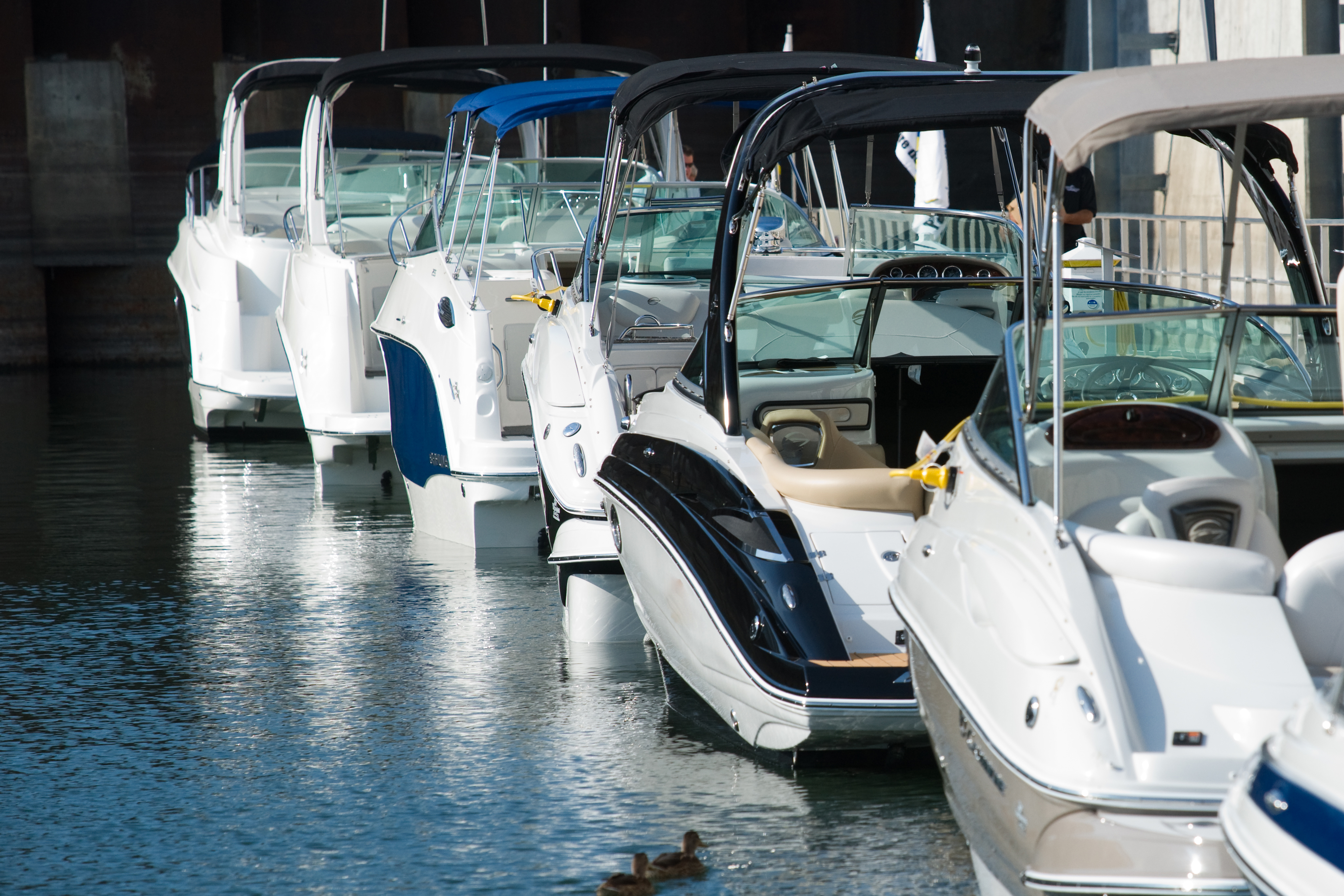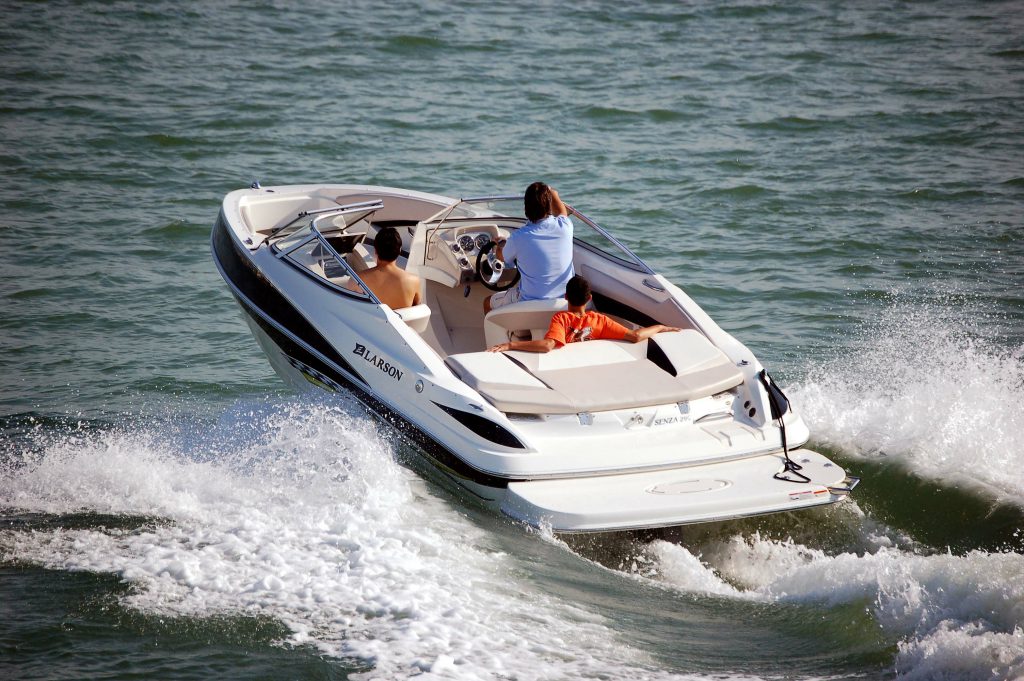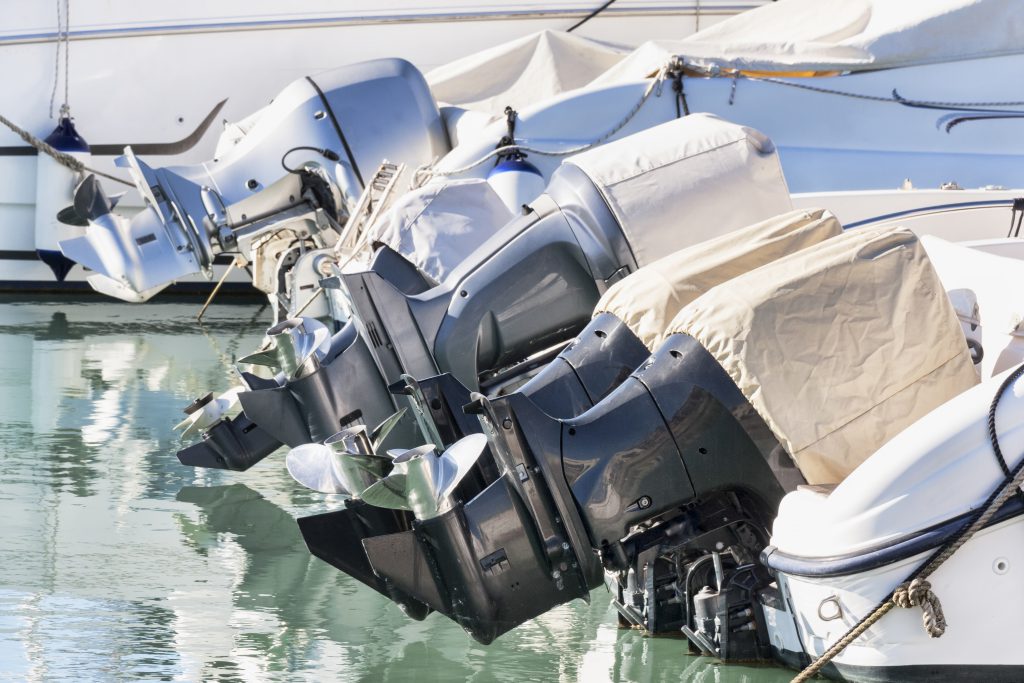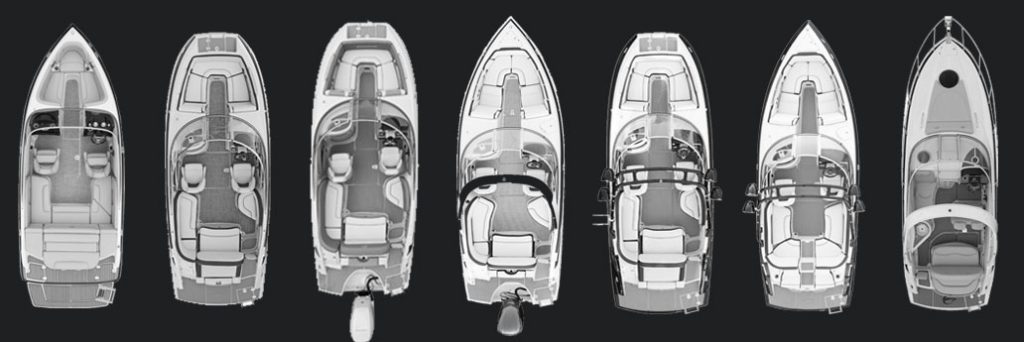What to Know When Buying a Powerboat
September 3rd, 2021 by team

by B.J. Porter (Contributing Editor)
There are two basic types of powerboat engines – inboards and outboards. There are advantages to both types of installations, and situations where one is far better than the other. While this is a complex topic to get into technical detail on, we can explore them at a basic level so you have some idea what you may get into when you see that flash new boat on the floor at a show this winter.
Fuel Types
As a general rule, diesel fuel is safer than gasoline. It’s less explosive and won’t make fumes that can settle in your bilge and blow up your boat. Safety features like engine blowers and spark arrestors have dramatically increased gas powered boat safety, and they are not dangerous if used properly. But you can’t get away from the chemical characteristics of the fuel if it spills or leaks.
But there are also disadvantages to diesel, because of its nature the engines have to be heavier. Diesel engines provide more torque, but they do it at lower RPMs, making them better suited to larger boats and sailboats.
There are few diesel outboards in the market, and they are only higher horsepower. Two-stroke diesel outboards are still heavier than four-stroke gas engines of similar power. For this article, we’re primarily talking about gasoline engines appropriate for smaller boats, though either fuel can apply to larger ones.
Inboard Engines

Inboard engines are permanently installed inside a boat. A large boat may have more than one, but all engines will be out of sight and down below, under the cockpit sole on smaller boats, or in a special engine space in larger ones. Inboard engines are heavier than outboards, but because of the heavier construction, they also have longer service lives.
A few of the advantages of inboards, which are true for most inboard options, include:
- Quieter operation.
- Longer service life.
- Better fuel economy.
- Lower, more central positioning in the boat, which is a plus (for stability) and a minus (for trim)
- Can install propellers forward of the stern, an important feature for some uses of the boat.
- Can use advanced transmission and multiple drive types, like the Volvo IPS drive or forward facing propellers, stern drives, and jet drives.
- Clean and clear sterns and swim platforms.
They are not without disadvantages, though.
- Heavier weight.
- Propeller can not lift completely out of the water.
- Running gear under water is vulnerable to groundings and requires a hole through the hull.
- Fixed propeller installations can not be trimmed and require additional tabs and hardware.
- Consume interior volume of the hull with machinery space.
- Require a vented engine space with blowers and spark arrestors for gasoline engines.
- More complicated maintenance and servicing, since you have to work in the tight engine space.
With cost, many variables can lead to an inboard costing more up front to install, though where you have to buy multiple outboards to get the same performance, the playing field is more equal.
Outboard Engines

Small outboards are an affordable, easy way to get small boats up and moving fast. Smaller ones are easily removed for servicing and maintenance, and their lightweight aluminum blocks make for lighter engines. They’re very popular, and new advances have produced cleaner, greener engines.
Some advantages of outboards include:
- Lower installation costs / easier to re-power and upgrade since you don’t have to go inside the boat.
- Outboards are safer, with little chance of fuel leaks or exhaust or carbon monoxide buildup inside the hull.
- Lighter weight with better power to weight ratios.
- Easily trimmed by adjusting the engine tilt, which is helped by the aft installation position.
- Can be lifted completely clear of the water to prevent growth, grounding damage, and electrolysis.
- Easier service access, small engines you can take right off and work on at home. Large engines can tilt out of the water.
- They take no interior space.
- Simpler and easier winterization.
There are applications where inboards have the advantage, though, and some disadvantages of outboards include:
- Higher fuel consumption.
- The stern is difficult to use, especially for fishing and swimming.
- More noise.
- Shorter service life.
- Some people think they ruin the pretty lines and look of a boat.
Drive Types – Stern, Fixed, Jets, and Pods

One enormous strength of the inboard is the choice of drive options. With an outboard, you’re limited to what they attach to the lower unit, and steering means turning the engine. If props in the water behind the boat aren’t your best option, with an inboard there are a few of the ways get your propulsion.
Fixed Propellers
The traditional running gear for inboards is a straight shaft coming out of the boat with a propeller on the end. You can put big propellers on it, and it’s a simple, low cost solution for a lot of power. The boat turnd with rudders, and like a sailboat it will need to be moving for the rudders to work. Though a skilled operator can turn the boat at low speed in a dual prop boat.
Stern Drive
The stern drive, also known as the “inboard/outboard,” takes some advantages of the outboard and gives them to inboards. A sterndrive is like an outboard lower unit, except it’s mounted on the transom of the boat and geared to the inboard engine. It clears the transom of those enormous engines, and still gives you a prop you can lift and trim. Most outdrives can’t lift clear of the water though, so they are popular but not perfect.
Jet Drives
Jet drives are no longer the province of personal watercraft, advances have led to drives capable of powering full sized power yachts at high speed. Powerful jet nozzles direct the propulsion force, so there is no external propeller or rudder. They can be put on very low draft vessels, and can’t catch lobster pots, kelp, and other obstructions. The intake vents can be blocked, which can damage the drive. Because the turning forces are from the jet nozzle, low speed maneuvering on boats without a rudder can be difficult.
Pod Drives
There are several alternative, high tech options such as pod drives, reverse mounted props, and other clever ways to direct the engine force into propulsion with increased efficiency. Systems like the Volvo IPS, Cummins Zeus, and the ZF Marine POD 4000 allow for easy rudderless maneuvering at any speed with fly by wire computerized control of the rotating. Not only does this give superb control for docking and close in maneuvers, there are substantive increases in both fuel efficiency and speed.
Making Your Choice

When you’re buying a used boat, it will already be powered and you have to know what you are buying. You may want to require or rule out certain combinations, but you’re unlikely to buy a used boat with the intent to repower it with something different. It makes little financial sense. So aim for a boat that suits how you plan to use it, and look for the engine setup that fits you best.
When ordering a new boat, the vendor may present you with multiple options which affect the usability of the boat and the bottom line on the price tag. Because of different design parameters for installing engines, many models are only available with inboard or outboard options. But some may do either, and it’s important to know what fits your plans and budget and how it affects the boat before you pick out the drive system you want.
- Posted in Blog, Boat Care, Boating Tips, Cruising, Fishing, iNavX, Navigation, Reviews, Sailing, Sailing Tips
- No Comments


Leave a Reply